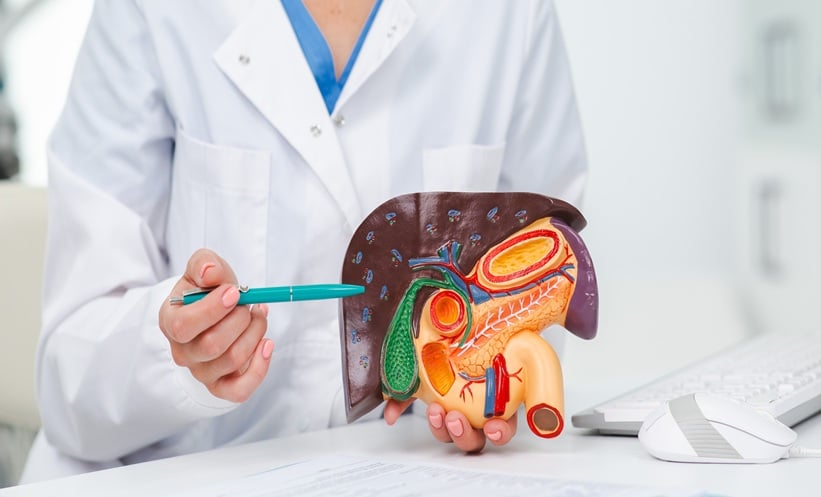A RECENT study has revealed new insights into how weight loss improves metabolic dysfunction–associated steatotic liver disease (MASLD), a condition becoming increasingly common alongside rising obesity and insulin resistance rates. Researchers investigated how different sources of fatty acids contribute to fat accumulation in the liver, identifying hepatic de novo lipogenesis (DNL) as a key modifiable driver of the disease.
DNL is the liver’s process of converting carbohydrates into fat and was found to be significantly elevated in individuals with MASLD, even when compared to those with similar obesity and insulin resistance. The study demonstrated that weight loss primarily reduced liver fat by decreasing DNL rather than altering the influx of fatty acids from the diet or adipose tissue.
Using multiple isotopic tracers, researchers quantified how liver fat is assembled from three main sources: plasma free fatty acids (FFAs), dietary fat, and DNL. In participants with high liver fat (HighLF), DNL accounted for over 20% of fat incorporated into liver-produced very-low-density lipoproteins (VLDL). After weight loss, this proportion fell to around 10%, while the contribution from FFAs rose. This suggests that with reduced DNL, the liver re-routes FFAs away from storage and toward secretion, ultimately reducing fat accumulation.
Notably, the intervention also led to improvements in insulin sensitivity and plasma lipid profiles, including lower triglyceride levels and increased HDL cholesterol. Despite similar levels of obesity and insulin resistance, participants with low liver fat (LowLF) showed distinct metabolic patterns, highlighting the need for further research into protective factors against MASLD.
The findings support the concept that excessive lipogenesis, rather than just fat delivery from other sources, is central to MASLD development. Given DNL’s responsiveness to dietary restriction, the study underscores the potential of targeted weight loss strategies to combat liver fat accumulation. As pharmaceutical approaches to inhibit DNL are being explored, lifestyle interventions remain the most accessible and effective method for managing MASLD today.
Reference
Lambert JE et al. Weight loss in MASLD restores the balance of liver fatty acid sources. J Clin Invest. 2025;135(9):e174233.








